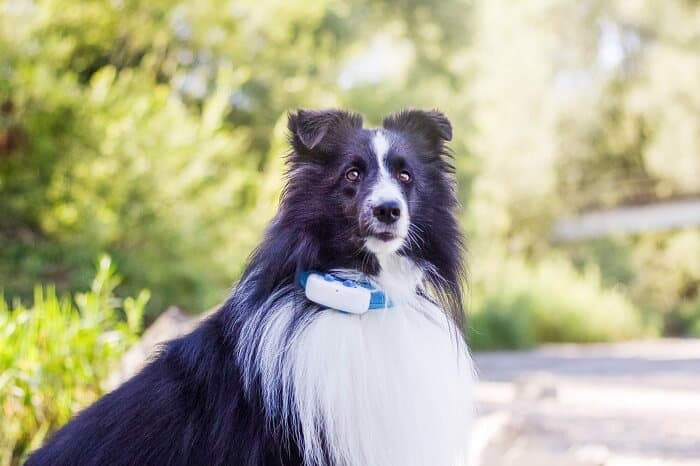Technology has brought many things, but a dog GPS collar is one of its most exciting developments. The Global Positioning System (GPS) enables remote detection of the animal’s exact position at any time and even stores readings at preset intervals.
A GPS dog tracker can come as a separate unit that clips on a dog collar or a dedicated dog collar. Unlike traditional leashes, in which you must keep pulling your pet into order, a GPS dog collar allows your pet all the freedom while keeping safe.
The dog GPS collar does more than eliminate the need for a fence. While the system may seem too advanced and clunky, it has many helpful features that appeal to pet parents.
How a GPS Dog Collar Works
A Global Positioning System or GPS collar device will allow you to track your pet in real-time and tell its location anytime. The device transmits the dog’s location to the owner on a browser interface or a smartphone.
Use geo-fencing to create a “home zone” when setting up a best dog GPS tracker. Once set, when your pet wanders beyond the defined location, an alarm sets off an alert on your phone. The system can also show you the distance your dog walks and the amount of time it takes. For example, Halo collar offers a GPS dog fence, which ensures your pet stays within a defined area.
A dog owner can track their pet using a separate device with GPS if the system does not use cellular networks.

Pictured :Tractive GPS Dog Tracker
Reasons why You Should Get Your Dog a GPS
Tracking
A report by the American Humane Association records that about 10 million pets (both cats and dogs) go missing annually. The pets are either stolen or get lost. The numbers are disconcerting when considering how much joy these four-legged family members add to our lives.
A pet parent must keep the dog safe and healthy. Technology plays a pivotal role in recent developments. Trackers use apps for IOS devices or Android to communicate the data they collect. A few dog GPS systems provide a web-faced interface; in most cases, the access is to veterans who pay extra for it.
Sometimes, base stations are implemented to establish communication between your phone and the tracker. They come in many sizes and shapes and can double as battery chargers. Often, the trackers use Bluetooth to communicate to your device and their base charger/station. As long as it is within the defined range, both you and the pet are in a safe zone. You may need multiple base stations if your house is enormous.
New GPS devices in the market make it possible for you to hear and see what your dog is hearing and seeing in real-time. You can literally walk your dog through life.
Aid in Training
Training is crucial to keeping a dog, and you can start at any age. Some benefits of dog training are that it builds confidence, strengthens the human-pet bond, and provides mental stimulation. Dogs and humans have different languages, but training offers a way to communicate with furry friends as the bond is strengthened through positive attention.
One of the most challenging tasks a dog owner can undertake is training a dog with anxiety, stubbornness, or intelligent pups. Dogs may have difficulty understanding what you are asking of them, leading to frustration for both the pet and the parent.
Some electronic collars are specifically designed for canine training purposes. The device lightly shocks your pet if it wanders outside, barks excessively, digs inappropriately or chews on things. Shocking the dog into obedience may not sound like a good approach for everyone. You can opt for GPS devices that produce a voice, clap, whistle, or click when the dog does something wrong. Vibrating collars also make a good alternative.
Even the best-trained puppies get distracted easily, and the GPS Tracker for dogs are perfect to get them back to track.

Monitor Your Dog Health
Like humans, cats and dogs are prone to getting fat. About 17.6 percent of dogs in the US are obese, and 35.1 percent are overweight. Obesity is common among older pets.
GPS collars include additional features to track your dog’s fitness and health. Most of the time, your dog prefers to lie on the back or lounge on the couch for hours. Exercise is one of the finest things you have to do for a canine to stay healthy, but monitoring your pet is impossible if you are working away from home. Through a GPS collar, you can check the dog’s heart rate and determine whether the pet is getting enough exercise or not.
A pet parent committed to maintaining the furry friend’s health will find the GPS collar a helpful tool.
Hunting Buddies
Hunting is incomplete without a dog by your side. Some publications suggest that humans and dogs have been hunting partners long before the agricultural age. The spot of hunting was necessary as it was the beginning of canine domestication.
A hunting dog should possess skills like receptiveness, strong prey drive, endurance, and athleticism. The most common hunting dogs are either gun dogs or scent hounds. Your prey plays a massive role in determining the type of dog you will need to get.
Gun dogs go after birds and small items like rabbits. The breed locates, preys, and flushes it for the hunter to shoot. On the other hand, scent hounds follow their prey through its smell and make a lot of noise while at it. In this case, the hunter follows the trail through the noise of the dog, even when the dog is out of sight.
A GPS tracking unit helps to keep a tab on one another. Even with a group of hunters, adding another GPS unit to your own is easy, which is a great safety feature. You can also know the exact location of your golden retriever, Labrador retriever, or beagle buddies when out and about in search of prey.
Safe and Pet-Friendly
Like many other devices, the GPS collar emits RF radiation or radiofrequency. This refers to a type of non-ionizing radiation at the low level of the electromagnetic spectrum. Because of its non-ionizing nature, this type of radiation lacks enough energy to remove electrons from atoms. However, there is not enough evidence to prove that radiofrequency radiation can damage DNA or cause any type of cancer.
GPS trackers are, therefore, safe for your dog as they are on the lower end of the electromagnetic spectrum. The devices easily attach to a regular collar or come as a complete set and are very pet friendly. GPS devices cannot irritate the skin or use harsh chemicals; hence, your beloved pet will not experience adverse side effects.
Dogs that Can Wear a GPS Collar
No matter how well trained your pet is, things happen. A dog can escape through an unlatched backyard gate or run through the mall and get lost. There are many instances where people and their dogs can involuntarily separate; hence a tractive dog tracker fits every dog.
If your dog has a history of digging yards, climbing fences, and bolting for open doors, among other things, then a GPS device is invaluable.
Another crucial time for your dog to have a GPS collar is when you are traveling with your furry friend. A pet in unfamiliar territory can quickly get lost if separated from its parents or guardian.
Also, during the snowy season, dogs tend to get lost faster, even in familiar territories, as snow makes it difficult for a lost dog to find its way home.
Another case you may need to consider a GPS collar is when your dog is home alone most days. You will enjoy peace of mind when checking your app often to ensure all is well at home.

Though the number of features varies from one GPS system to another, you can expect these features like a waterproofed unit. You can either clip the unit to your pet’s collar or invest in one that has a built-in.
Most of the units come with a rechargeable battery and have the ability to create a home zone. As long as the pet abides by the requirements, you get no notices, and the GPS goes into battery-saving mode.
When shopping for the GPS collar, check if you have activated your emails and text for prompt communication and action when needed. You can also consider a downloadable program on your phone to track your pet’s movement. Real-time tracking is the best way as you will take a preventive approach to avoid any problems and enable an immediate response to in case of anything.
While the first units were primarily made for medium and large dogs, small pet trackers for smaller dogs and cats as well are now on the market. If your dog is small, ensure you check the size of the unit before purchasing. You can also opt for the separate one to attach to the collar.


